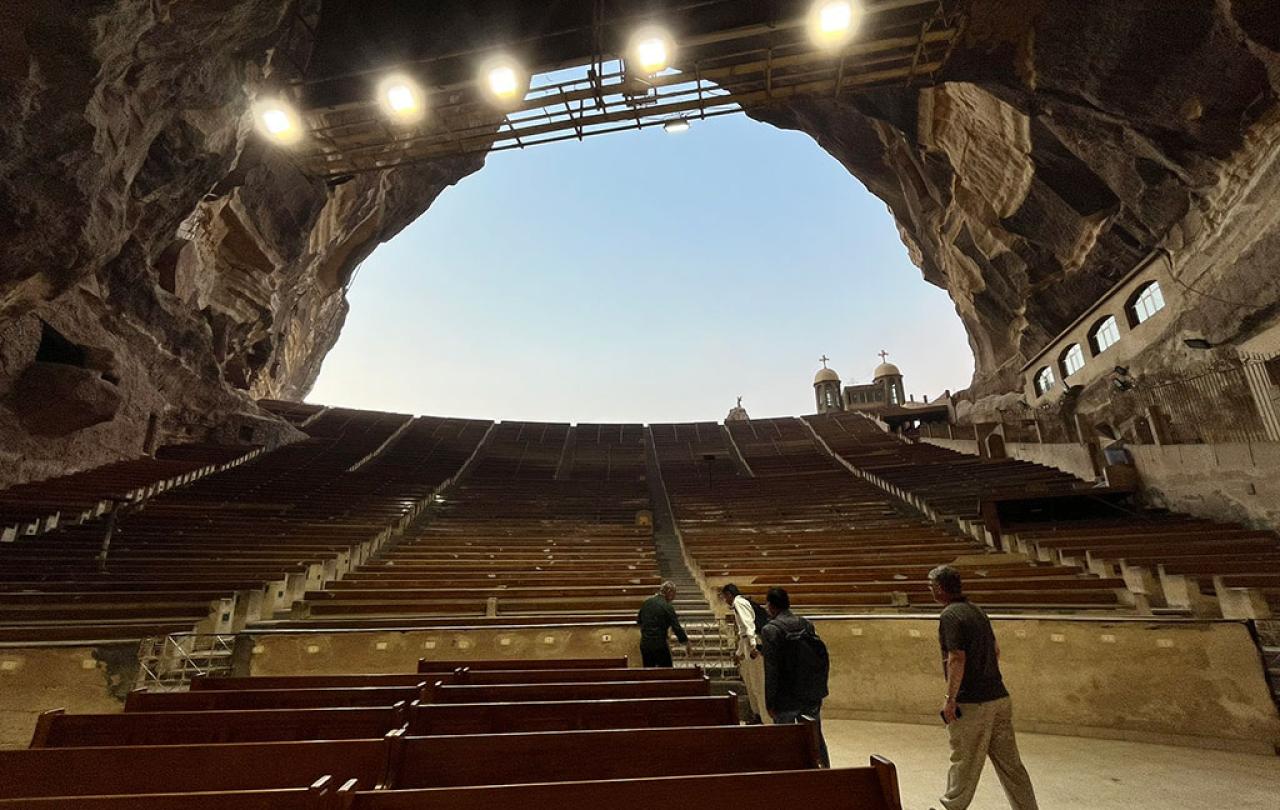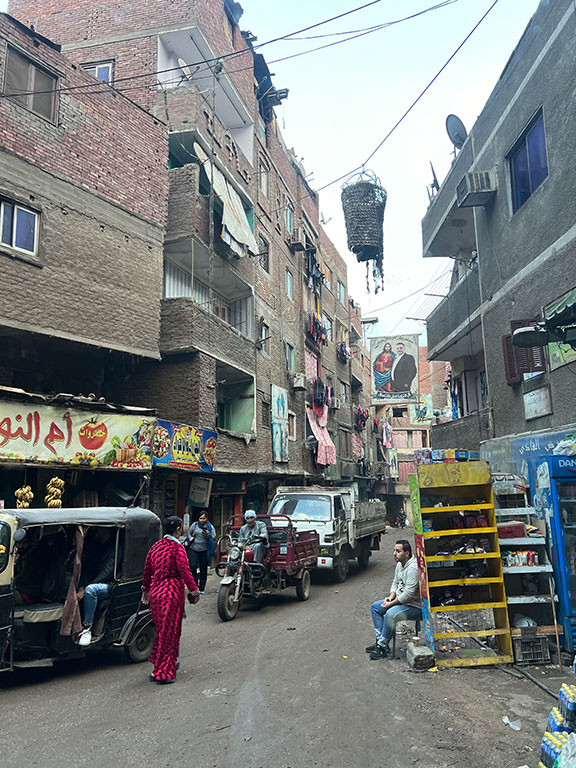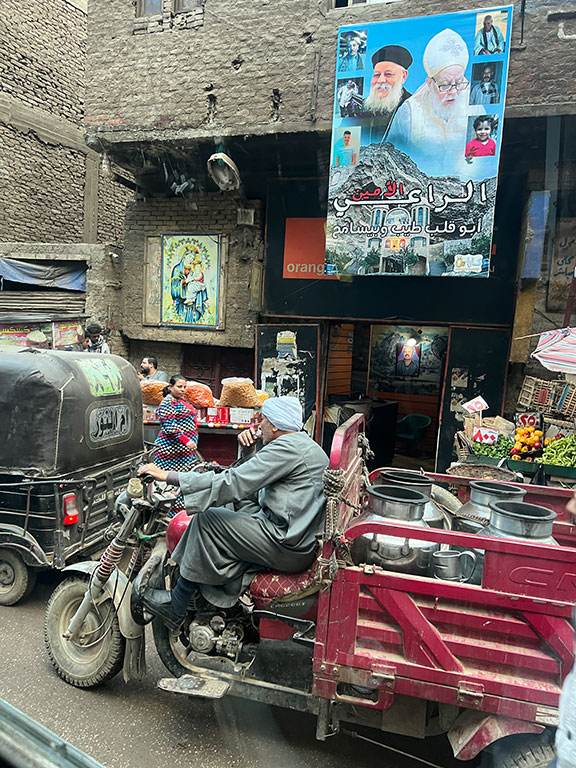
Dreams are rarely modest. They don’t stay neatly in the compartments we make for them. Let’s say you have a dream job. Well, if you dream of working as an engineer or a baker or a teacher, you are also dreaming of clients, ingredients, or students and a school. Or maybe you have a dream home. Well, that home can’t exist in a vacuum. It requires a neighborhood, various political communities, a natural environment, and countless other people.
When we dream a life, we dream a world.
When Jesus preached, he announced a transformed world. When Christians dream a world, his is the world we ought to hope for. Jesus called it the “kingdom of God,” which is just to say, the world as God would have it be. That, however, only gets us so far. What kind of world would God want, after all?
Almost two-thousand years ago, some Christians in Rome were having trouble agreeing about this. Trying to help them out, Paul, the travelling preacher wrote them a letter. In it, he offered a “definition” of this ‘kingdom of God’. The Roman Christians were in danger, he thought of placing too much weight on a minor question about what food they should or should not eat. In response, Paul advises them to permit various different eating practices in their community: “For the kingdom of God is not food and drink,” he says, “but righteousness and peace and joy in the Holy Spirit.”
A life worth dreaming, Paul is saying, is not merely about the means of life— what keeps us alive – things like food, drink, money, safety, health, and the like. Flourishing includes these things, but it orients them toward life led well (righteousness), life going well (peace), and life feeling as it should (joy).
If we look at each of these three things in turn, we can glimpse a compelling vision of what it means to flourish and what kind of world we might dream of (and live towards) today.
Life Led Well: Righteousness
Righteousness, to be honest, is a strange word. It has a rather musty aroma to it: overly formal and more than a little out of date. These days, we hear it most often in the context of self-righteousness, which is decidedly not part of leading one’s life well.
So what on earth does Paul mean by it? Paul was writing in ancient Greek, and the word he uses could also be translated as “justice.” It’s an important word in the Jewish scriptures that Paul read. It means something like being in step with God’s law, which had been laid out in God’s agreement, or covenant with God’s people. This covenantal relationship is, according to Paul, the context in which our lives flourish. To lead our lives well is to act in line with the good intentions of this covenantal relationship. This is what “righteousness” means for Paul.
We might do all sort of impressive things, even things that look like moral heroism, but if we do them without love... they’re deeply flawed.
When Jesus was asked how to sum up the law that defines righteousness, he answered: Love God and love your neighbor as yourself. So a “righteous” life is a life of love. Whatever we might do, Paul says, if we do it apart from love, it lacks value. We might be a religious virtuoso with all sorts of nifty spiritual gifts, but if we lack love, we are “nothing.” We might do all sorts of impressive things, even things that look like moral heroism, but if we do them without love, Paul insists, they’re deeply flawed.
Some of the most famous words ever written about love give us an idea of what love looks like in practice:
“Love is patient; love is kind; love is not envious or boastful or arrogant or rude. It does not insist on its own way; it is not irritable or resentful; it does not rejoice in wrongdoing, but rejoices in the truth. It bears all things, believes all things, hopes all things, endures all things.”
This kind of love isn’t just any kind of love. It’s God’s kind of love. It’s the love that God has shown over and over again in faithful care for the world and in particular for God’s people. It’s the love, above all, that we see in the life of Jesus, who was willing to die for us as an expression of love.
God’s love is faithful even in the midst of the world’s brokenness. This fact offers a profound sense of assurance. God is for us. And “if God is for us,” Paul writes,
“who can be against us?” If God gave God’s own Son for us, what would God not give?
“Neither death, nor life, nor angels, nor rulers, nor things present, nor things to come, nor powers, nor height, nor depth, nor anything else in all creation, will be able to separate us from the love of God in Christ Jesus our Lord.”
To be sure, the love of God does not guarantee that our lives will go well. Jesus faced misunderstanding and violent opposition. If we love like he did, we could face the same. In Jesus, the power and wisdom of God’s love looked like weakness and foolishness. Ours should too. In Jesus, the cost of love was death. We ought to be prepared for the same.
In a fully flourishing world, none of that would be the case. Love would not suffer but dance with joy. But our world is not yet fully flourishing. (Obviously.) Love, however, spans the gap between the world we have and the world we hope for because it’s how we should live on both sides of the divide. To love well is—always and everywhere—to lead one’s life well.
Life Going Well: Peace
Paul defines life going well as peace. Peace is primarily about right relationships, which are the most important of life’s circumstances. They’re the context in which the value of other circumstances (food, money, etc.) becomes clear. For Paul, life is going well when we live at peace with God, with one another, and with the whole creation.
The foundation of life going well is peace with God. Against all the odds, God has made this peace for us, having “reconciled us to himself through Christ.” Ultimately, when Christ’s purpose is fully realized at the end of all things, the world will be filled with God’s presence and become the home of God, entirely at peace with its creator. This fundamental peace flows in and through all the relationships between creatures. We and the world come to be at home with one another when God is at home among us.
Captives should be set free. Needs should be met. Honor should be extended to those on the margins, in fact to everyone.
Paul thinks this kind of peace should start to show up here and now among those who have taken up Jesus’s way of life. In this community, “there is no longer Jew or Greek, there is no longer slave or free, there is no longer male and female; for all of you are one in Christ Jesus.” Unity in diversity and mutual belonging are foundational principles for the way of life Paul advocates. Captives should be set free. Needs should be met. Honor should be extended to those on the margins, in fact to everyone. This is how the Church is supposed to live. All too often, history shows us, it does not.
The good news is that Jesus’s peace is not trapped in or dependent on the church. Ultimately, it extends beyond the bounds of the human community entirely. Full human flourishing is bound together with the full flourishing of all humanity and the entirety of the creation.
It is in the context of this whole world at peace that the true value of material goods becomes clear. As part of a world loved by God and destined to be God’s home, the fruit of the creation and the products humans craft are valuable. And because they are valuable, it is important that they be equitably distributed. This is an essential component of true peace, one that is plainly lacking in our world today.
Because of the unjust distribution of material goods and the broken relationships it reveals, peace is not always possible, or even good. It would be wrong to live fully at peace with a wealth-obsessed vision of life or within an economic system where some starve while others waste nearly as much food as they consume. While we ought to pursue genuine peace, we ought to beware of false peace.
In this life, all is not at peace—and it will never be. Flourishing life in this world is lived for the sake of a peace that we will never find in its fullness this side of a renovation of creation that we cannot bring about for ourselves. Nevertheless, we should live as peacemakers. We should work to reconcile ruptured relationships among humans, between humans and God, and between humans and the rest of the natural world. We should also accept that we may be hated precisely because we are peacemakers. Sometimes leading our lives well results in our lives not going well.
Life Feeling as it Should: Joy
Paul offers us a vision of flourishing in which (1) a life led well is one of righteous love and (2) for life to go well is for there to be peace. How would it feel to live such a life? One word could never sum it up completely, but Paul’s best shorthand is joy.
Joy is an emotional response to something that we recognize as good. We don’t simply rejoice in the abstract; we rejoice over something that we take to be good. In the context of a fully flourishing life, joy is the “crown” of the good life: joy is the appropriate response of the righteous person in a world at peace.
Solidarity like this requires us to resist modern tendencies to weep over those who rejoice (Instagram’s FOMO) and rejoice over those who weep (Twitter’s schadenfreude). In a broken world like ours, not all joy is worthy of the name.
This world, however, is not at peace. Consequently, there is much over which we should not rejoice. Love must regulate what gives us joy: love, Paul writes, “does not rejoice in wrongdoing, but rejoices in the truth.” Our emotional lives, Paul is saying, ought to be indexed to the truth of the world as it is. In short, it is more important to feel rightly than to feel good.
Another person’s suffering, for example, should elicit compassion, not joy. “Rejoice with those who rejoice, weep with those who weep,” Paul writes. Solidarity like this requires us to resist modern tendencies to weep over those who rejoice (Instagram’s FOMO) and rejoice over those who weep (Twitter’s schadenfreude). In a broken world like ours, not all joy is worthy of the name.
There is, however, an omnipresent cause for good joy, even in this life: God. Even when life’s circumstances are plainly not as they should be, there is still God, whose loving presence can and should be the cause of joy. That’s why Paul can command joy: “Rejoice in the Lord always.”
How does Paul expect us both to “rejoice always” and to “weep with those who weep”? Note that the command is to rejoice always, not to only rejoice. In this life our joy often must be mixed with sorrow. Rejoice in God, but lament over injustice. Rejoice in God, but weep with a neighbor in pain. Even our joy over genuinely good aspects of the world—the small joy of a sweet wild strawberry or the large joy of reconciling with a long-estranged friend—ought to be tinged with sorrow over the fact that this precious thread is not yet woven into a tapestry of fully flourishing life. In the world as we know it, joys are also always longings. They reach for a world in which they would extend into an unending web of joy. Our joys, Paul insists, ought to be as immodest as our dreams. They ought to reach for a whole world.
To sum up: in this world, flourishing life is
- always and only a life of love,
- always but not only a life of joy
- neither always nor only a life at peace.
In the end, all three are woven together, but in this life, in which there are circumstances with which it would be wicked to be at peace and over which it would be evil to rejoice, love must come first.
When we dream a life, we dream a world. A world of love, peace, and joy, in harmony with one another. This is the world Jesus’s life summons into being. It lies beyond this immature and evil-stricken world. And yet it summons us. We hunger for it.
Paul affirms this hunger. It is a sign that we were indeed made for more than the lives we experience here and now. And yet it also points to the fact that some foretaste of that life can be discovered here. In little pockets of peace in communities marked by love, there are yet grounds for joy. Grounds that help us see every good thing around us as a gift from God.







